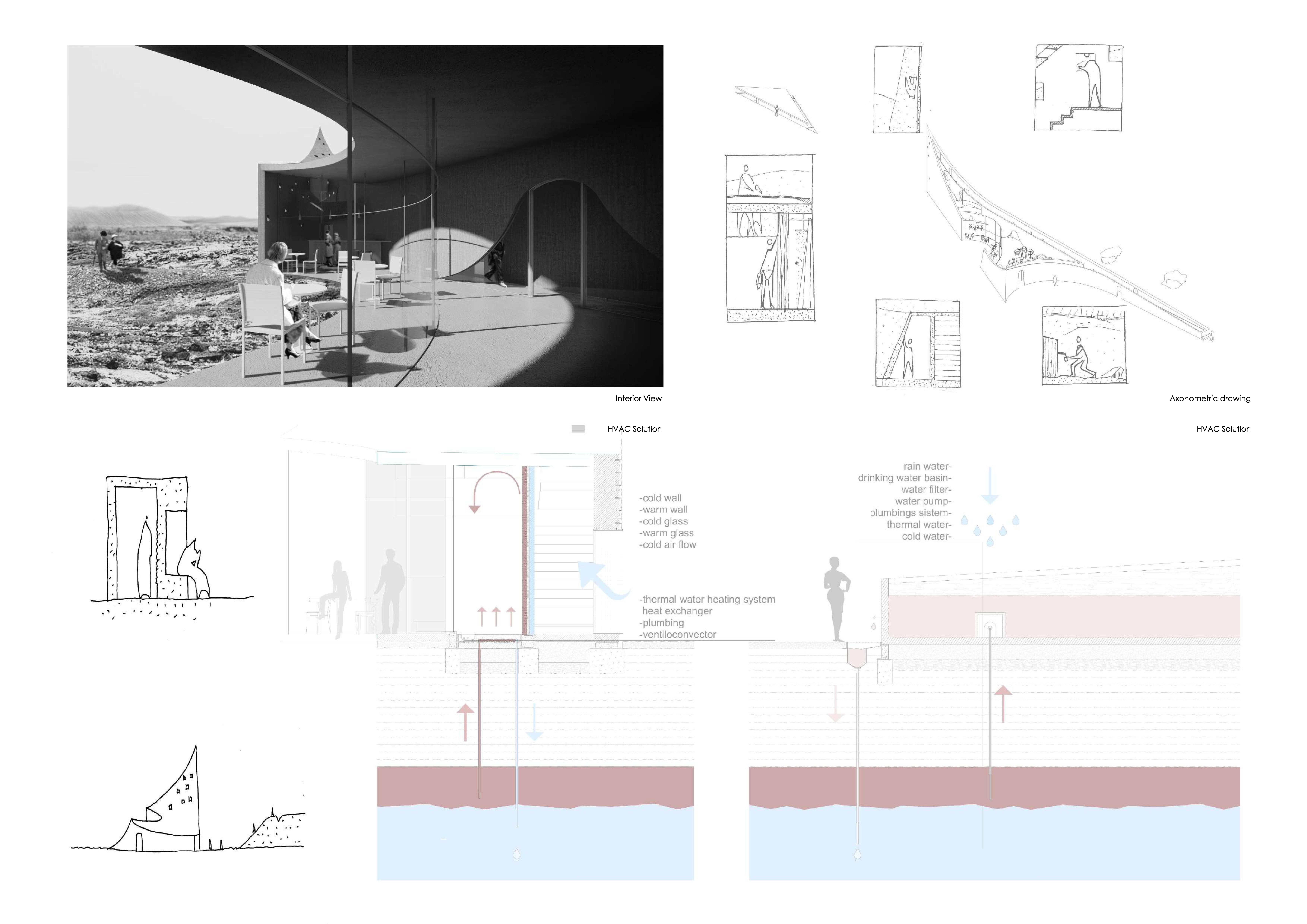5 key facts about this project
Upon entering the project, one is immediately struck by the open-plan layout that facilitates fluid movement throughout the space. This configuration encourages communal interaction while also allowing for individual privacy when needed. The careful consideration of sightlines and flow illustrates a deep understanding of spatial dynamics, ensuring that all areas within the project can be easily accessed while maintaining a sense of openness.
The architectural design emphasizes sustainability, utilizing materials that are both durable and environmentally friendly. Notable materials incorporated into the construction include concrete, glass, and timber, each chosen for their structural integrity and aesthetic qualities. The use of concrete not only provides a robust framework but also enhances the thermal efficiency of the building. The expansive glass façades serve to invite natural light into the interior, blurring the lines between indoor and outdoor spaces and fostering a connection with nature. Timber accents add warmth and texture, creating an inviting atmosphere that is crucial for the intended function of the space.
This project stands out for its innovative approach to energy efficiency. By incorporating passive design strategies, such as strategically placed overhangs to control solar gain and the use of high-performance glazing, the building minimizes energy consumption while maximizing comfort for its occupants. This forward-thinking method represents a broader commitment to environmental responsibility within modern architecture, aligning with contemporary expectations for sustainable practices.
The project also features various communal spaces designed to reflect the values of collaboration and community engagement. These areas are adaptable, serving multiple purposes from casual gatherings to formal events. Breakout rooms with movable partitions allow for a dynamic utilization that caters to the evolving needs of its users. This flexibility is a key design consideration, responding effectively to the diverse activities anticipated in the space.
Unique to this project is its integration of local cultural elements, which not only honors regional identity but also enriches the user experience. The architectural details subtly reference traditional motifs through modern interpretations, adding layers of meaning without overshadowing the building’s contemporary essence. This careful blending of influences encourages a dialogue between past and present, inviting occupants to engage with their cultural heritage while embracing modern living.
Landscaping plays a crucial role in the overall design, framing the building and enhancing its contextual relevance. Native plants were selected to ensure a low-maintenance yet vibrant exterior, contributing to local biodiversity. Outdoor spaces provide opportunities for relaxation and interaction, reinforcing the project’s objective of fostering community connectivity.
Overall, this architectural project reflects a confluence of functionality, sustainability, and cultural sensitivity. It successfully navigates the complexities of modern design while remaining firmly grounded in its environmental context. To explore more about the architectural plans, sections, designs, and underlying ideas that shaped this project, interested readers are encouraged to examine the detailed presentation available, which offers deeper insights into the concept and execution of this remarkable architectural endeavor.

























